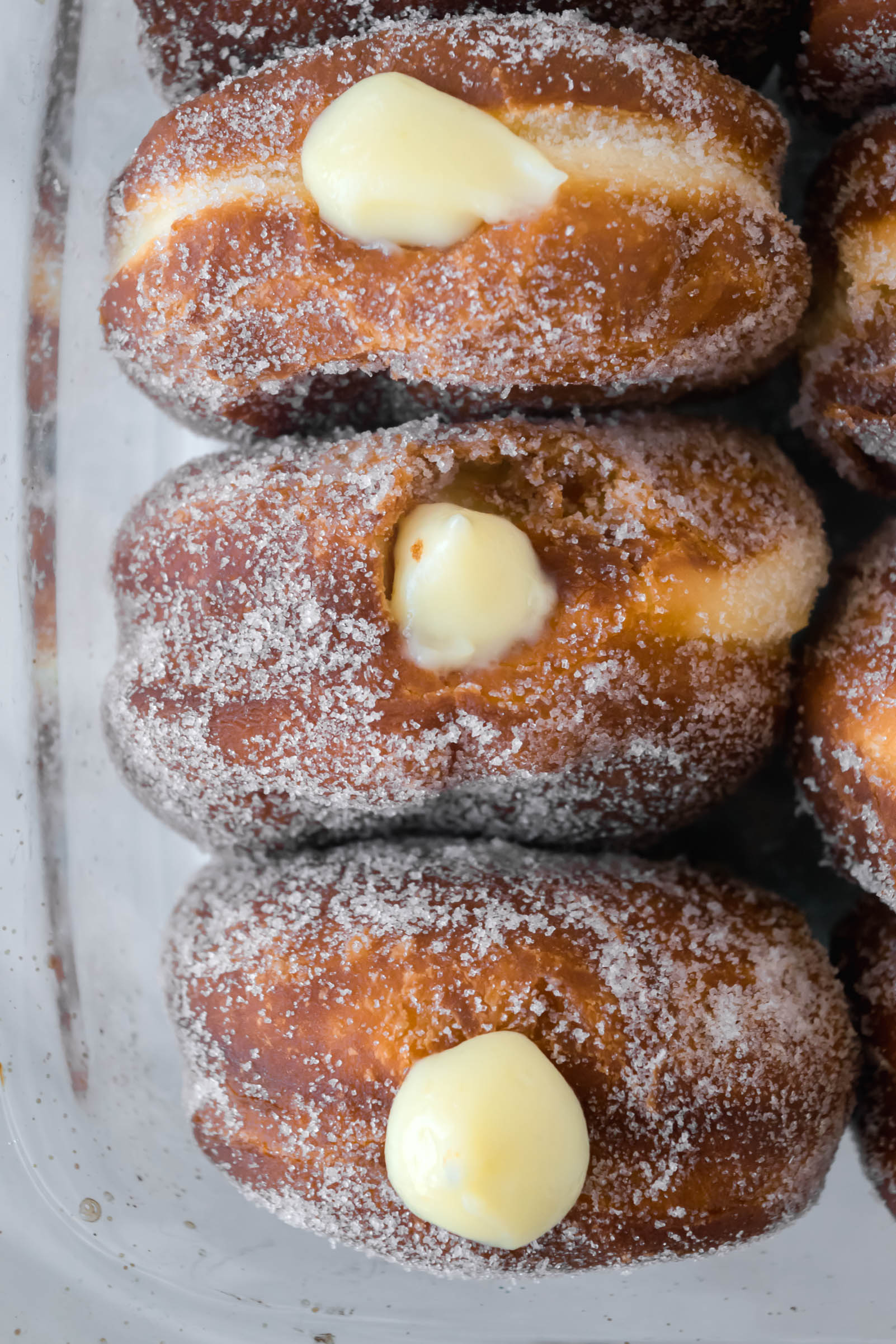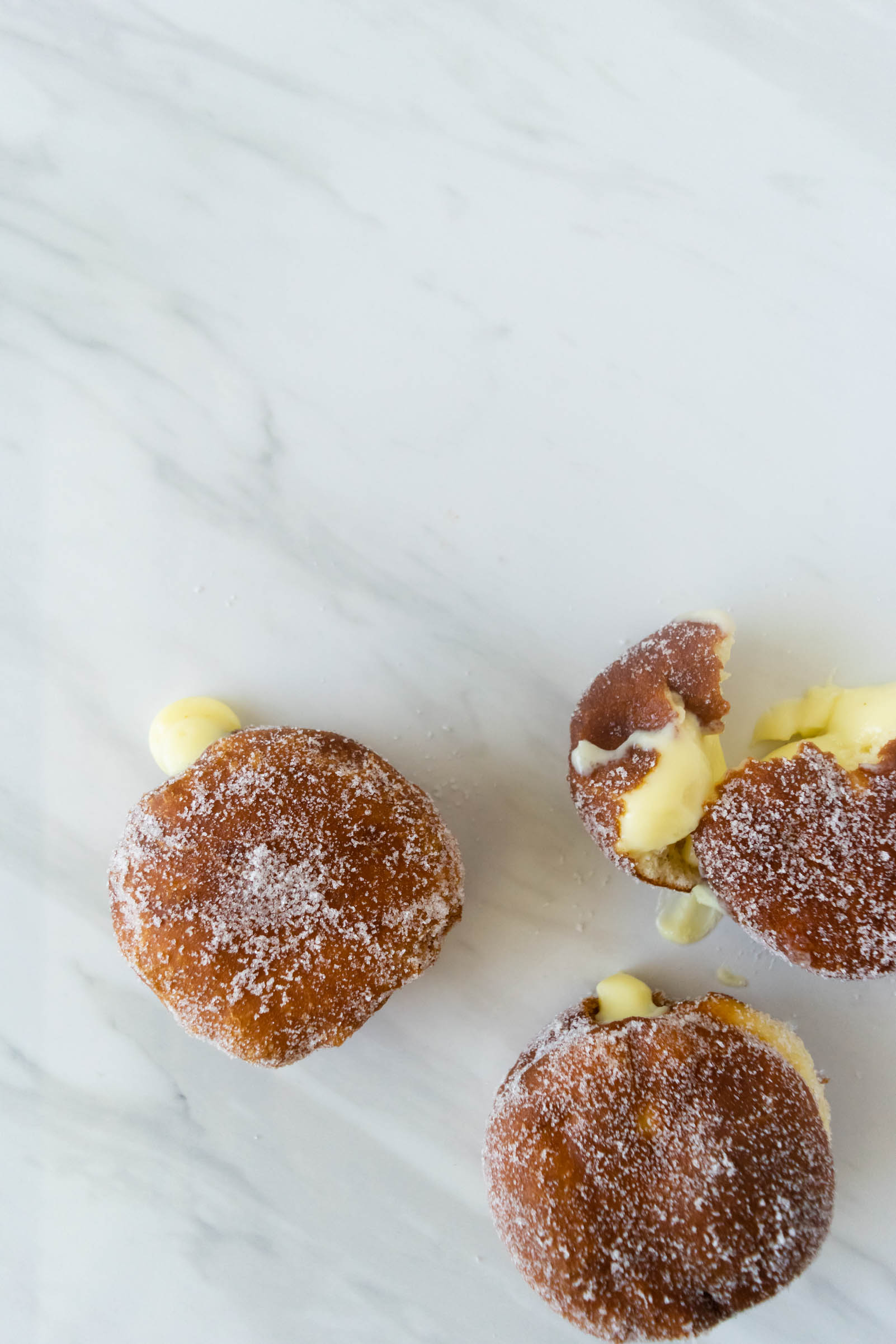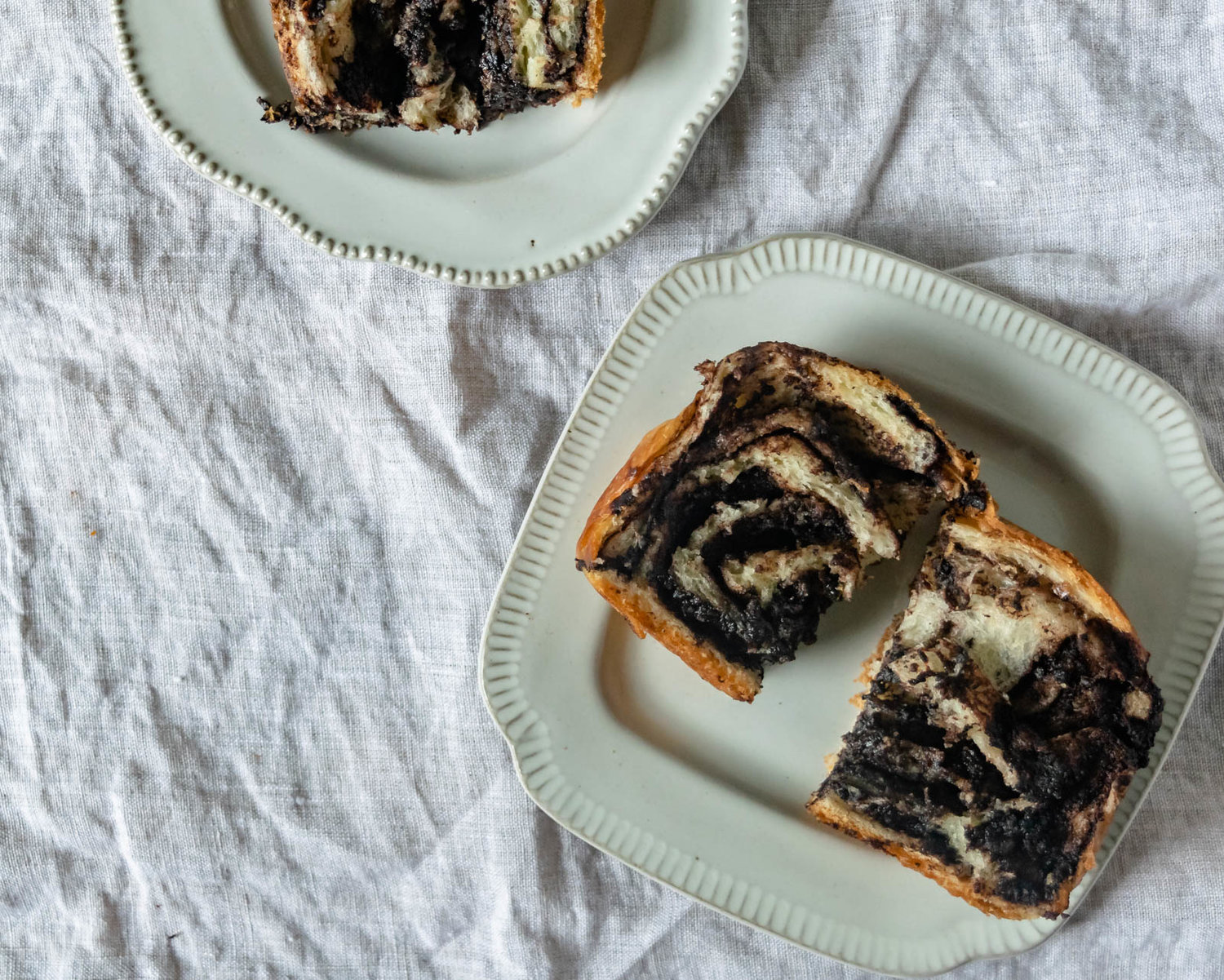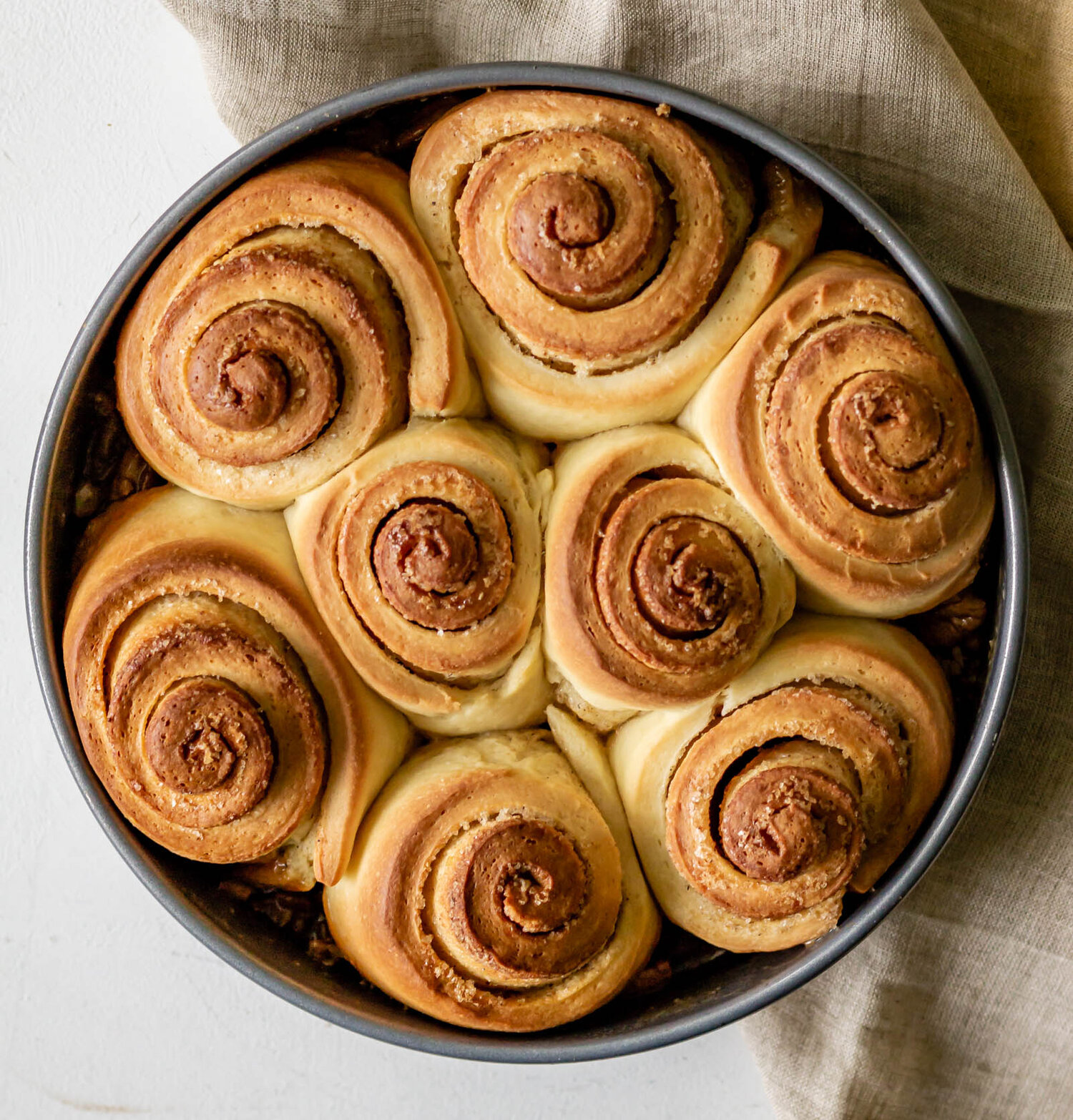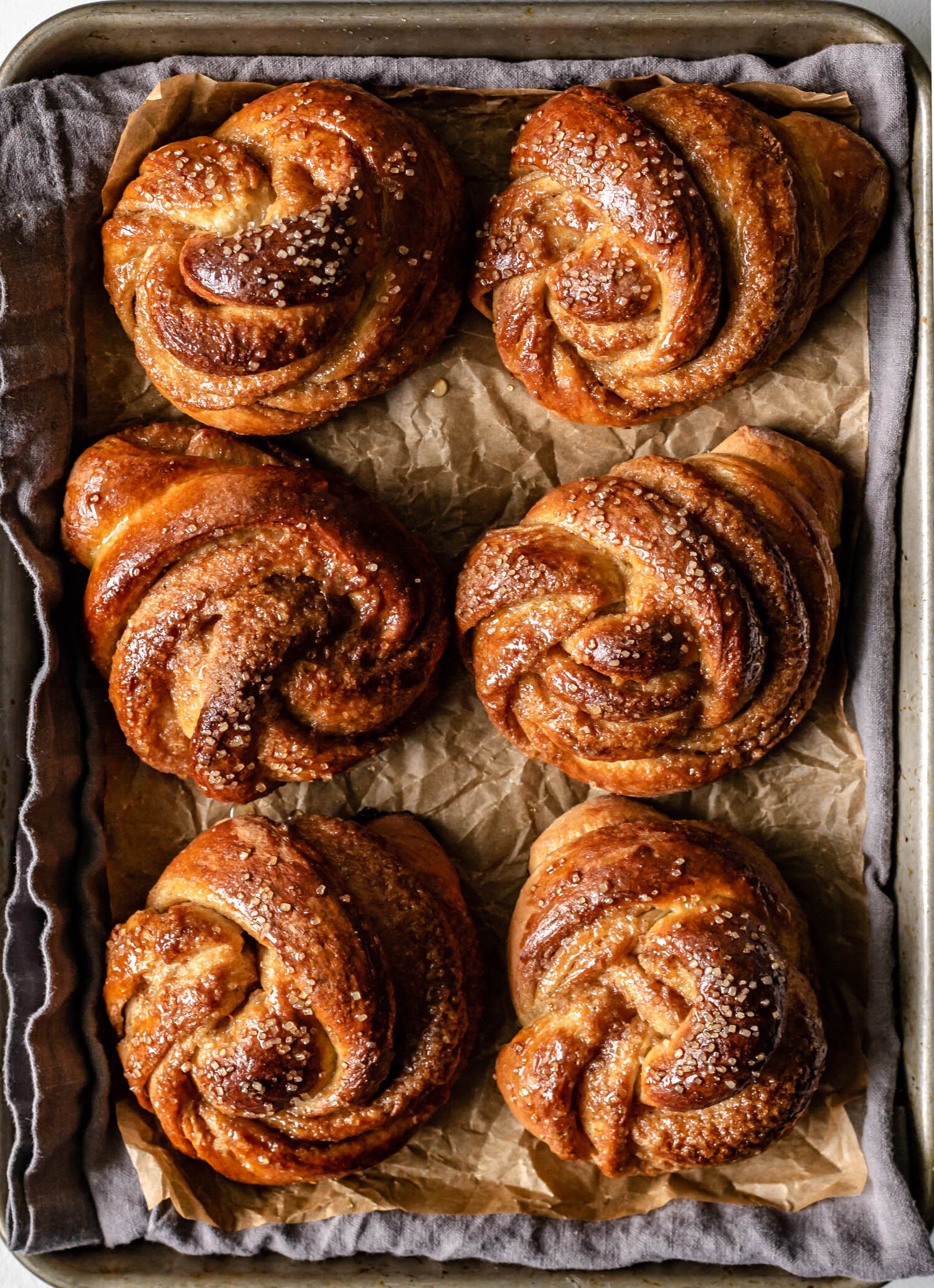Pumpkin Brioche Swirls
/The last few weeks have been a little heavy content wise here on the blog. Lots of multi-step recipes, doughs that need hours of proofing, cakes that need layering. And sometimes, I wonder to myself if it’s all too much-if maybe I will get more Instagram likes or more blog traffic if I simplify my work, make it easier or quicker. But the more I think about it, the more I realize that sort of work doesn’t bring me joy. I was a ballerina for 16 years, spending countless hours, multiple evenings a week taking class after class and it was where I felt the most my self. For me, both pastry and ballet fall into a sweet spot, where extreme technicality and precision sync up with the creative. Where feelings and art are expressed by piecing together something beautiful out of nothing. So on days when I ask myself what I want this blog to be, that’s it. The food media industry is saturated with everything quick and easy. Our Instagram and Pinterest feeds are bursting with brightly lit, minute-long videos aimed to help you get dinner on the table as quickly as possible. And don’t get me wrong, those resources are wonderful and helpful, but I don’t think we need another one and that’s not where I most feel myself. I want this blog to be a place where creativity and exactitude collide to create something new and satisfying to the body and the soul. I want a space that provides careful instruction and guidance, but that encourages you to step out of your comfort zone and challenge yourself. For me, those are the moments worth celebrating and food worth investing in.
A couple weeks back, I shared a Chocolate Tahini Brioche Babka and some brioche basics. This recipe is meant to go hand in hand with that recipe and it uses the same brioche recipe. If you’re looking for a weekend project, these are your go-to’s. Making one batch of the brioche will give you enough dough for one babka and 12 pumpkin swirls. Or you can use the entire batch and make 24 swirls…or two babkas…or a baby babka and 18 swirls…really, anything goes. This twist technique is loosely based on the show-stopping cinnamon roll beauties coming out of Circus Bakery in Paris and I’ve included an article with step-by-step shaping photos in the recipe itself.
So maybe long rise times and lots of dough shaping isn’t necessarily your thing, that’s okay. But I hope that after stopping by my blog, you feel a little bit challenged and empowered to try something a little out of your comfort zone and who knows, you may find that you love it as much as I do. At the very least, I hope that you will be left with a sense of accomplishment and a few very delicious pumpkin swirls.
Pumpkin Brioche Swirls
Yield: 12 knots
Ingredients:
750 brioche dough
1/2 cup (150 g) canned pumpkin
50 g brown sugar
1 T cinnamon
1/2 tsp pumpkin pie spice
For the egg wash:
1 egg yolk
1 egg
1-2 T water
For the glaze:
1 cup powdered sugar
1 tsp vanilla extract
Pinch of salt
About 1/4 cup heavy cream
Procedure:
Remove dough from the refrigerator and allow to come to room temperature slightly. It should be cool, but not cold.
In a small bowl, stir together pumpkin, brown sugar, cinnamon, and pumpkin pie spice. Set aside.
On a floured surface, roll dough into a 12x16” rectangle. Use an offset spatula to spread the pumpkin mixture onto 2/3 of the dough. Fold the third of dough without pumpkin spread up and over onto the pumpkin dough. Fold the remaining third over the top, like you are folding a letter. (If you are confused about the folding/shaping process, these are inspired by the world-renown cinnamon rolls at Circus Bakery in Paris. You can find step by step shaping pictures here.)
Lightly roll your dough envelope to 1/4” thickness. Use a sharp knife or a pastry wheel to slice into 12 equal strips.
Working quickly, roll the ends of each strip to create spiral. Wrap the spiraled dough strip around your hand twice and tuck the end through the center to form a knot-shape. Place on a parchment-lined baking sheet.
When all of your rolls are formed and spread out on the baking sheet, cover with plastic wrap or a kitchen towel and let proof until doubled in size, about 45 minutes.
When you are ready to bake, preheat the oven to 350 degrees. Combine egg, egg yolk, and water in a small bowl to make egg wash. When the rolls have risen, use a pastry brush to lightly coat with egg wash. Bake for 20-25 minutes, until golden brown. Let cool for 5-10 minutes on the pan, then transfer to a wire cooling rack.
To make the glaze, whisk together powdered sugar, vanilla extract, and 2 tablespoons of heavy cream. Add the last 2 tablespoons heavy cream, a little at a time, until you reach your desired consistency. You may not use all of the cream.
Drizzle warm pastries with glaze and enjoy immediately.






